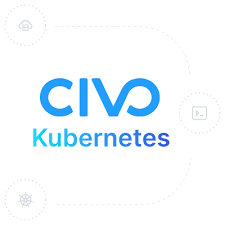Setup a Kubernetes cluster on Civo
 Sundaram Kumar Jha
Sundaram Kumar Jha
Setting Up a Civo Kubernetes Cluster Using the CLI: A Step-by-Step Guide
If you're looking to create a Kubernetes cluster quickly and easily using Civo, you're in the right place. This guide will walk you through the steps to set up a Kubernetes cluster using the Civo CLI and get your environment up and running.
Step 1: Install Civo CLI
Before you start, make sure you have the Civo CLI installed on your local machine. You can do this by following the installation instructions in the official Civo CLI documentation.
You can verify the installation by running:
civo --version
Step 2: Install kubectl
You also need to have kubectl installed for managing your Kubernetes clusters. You can install it by following the instructions on the official kubectl documentation.
Once installed, verify it by running:
kubectl version --client
Step 3: Create a Civo Account and Start a Kubernetes Cluster
Head over to Civo's dashboard and create an account if you don’t already have one.
Navigate to the Kubernetes section and create a new Kubernetes cluster.
Once the cluster is up and running, generate an API key to interact with the Civo CLI. You can find this in your Account settings.
Step 4: Save Your API Key
With your API key created, it’s time to configure the Civo CLI to recognize it. Run the following command:
civo apikey save <your-api-key-name>
The CLI will prompt you to paste your API key. Once done, your CLI will be authorized to manage your clusters.
Note: You can also create a Kubernetes Cluster using civo cli
Step 5: Get the Kubeconfig File
After the cluster is created, download the kubeconfig file from your Civo dashboard. This file allows kubectl to interact with your Kubernetes cluster.
Step 6: Set the Kubeconfig Environment Variable
You need to tell kubectl where to find your kubeconfig file. Run the following command, replacing <path/to/your/kubeconfig/file> with the actual path to your kubeconfig file:
export KUBECONFIG=<path/to/your/kubeconfig/file>
Step 7: Verify the Cluster Setup
To confirm that the Kubernetes cluster is set up properly, run:
kubectl get nodes
If this command runs successfully and you see a list of nodes, congratulations! You have successfully configured your Civo Kubernetes cluster.
Conclusion
Setting up a Kubernetes cluster with Civo CLI is a straightforward process that simplifies getting started with Kubernetes. With just a few steps, you can spin up a cluster and start deploying your applications.
Happy coding!
Subscribe to my newsletter
Read articles from Sundaram Kumar Jha directly inside your inbox. Subscribe to the newsletter, and don't miss out.
Written by

Sundaram Kumar Jha
Sundaram Kumar Jha
I Like Building Cloud Native Stuff , the microservices, backends, distributed systems and cloud native tools using Golang